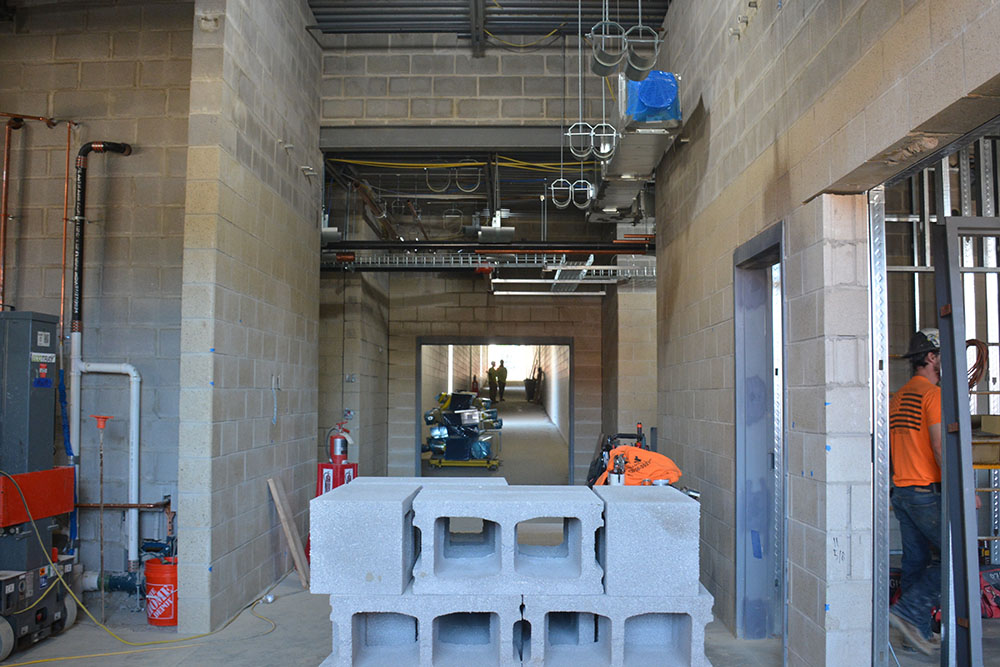We’ve all done our fair share of lockdown drills. Everyone gets into a blob in the corner of the classroom and continues to talk and check their phones in spite of the teacher’s instructions.
But, if there really were an armed intruder, would we really just huddle in a corner until the gunman showed up at the door?
In the wake of recent school shootings, critics are questioning the way students and teachers have been trained to deal with intruders. According to these critics, the current system makes us practically sitting ducks.
The solution? A new school security known as ALICE is being rolled out by school systems across the country. Principal Ed Klein refers to it as “the model du jour.”
ALICE, or Alert, Lockdown, Inform, Counter, Evacuate, are five response strategies recommended to respond when an armed intruder enters.
The Beachwood Police Department introduced Beachwood teachers to the ALICE method through a two-part training this spring.
“The police stressed that the parts are interactive, but not sequential,” Superintendent Dr. Richard Markwardt wrote in an email.
According to the ALICE model, there are five reactions one can choose when in such a scenario.
Alert: When you know of the situation, your job is to let others know of the situation, so they may react appropriately.
Lockdown: If the intruder is in your end of the school, follow routine lockdown procedures and then attempt to get out through a back exit.
Inform: For instance, if Klein were to receive news of an armed intruder in the 100 wing, he would call out the information via the school’s public address system.
Counter: With this strategy, if a gunman enters, the goal is to attack or at least attempt to distract the intruder in order to get as many people as possible out of the room. It is important to note that attack does not necessarily mean inflicting bodily harm, as it could be as simple as throwing textbooks to divert the intruder’s attention. Anything that provides a moment where potential victims can gain the “upper hand” is good.
Evacuate: Obviously, if the intruder is in the 100 wing and students are in the 500/600/700 wing, students should not just sit around and wait. It is advised to leave the building. Klein’s advice with this strategy is for students to run as far as they can from the high school.
“Get the heck out of here. Anywhere but here. If your parents call me and ask where their kid is, even if you are headed to the Pennsylvania border, I know you will be back in time for dinner,” Klein said. The goal of evacuation is to ensure that there are very few, and hopefully no, targets for the intruder to attack.
“You have to make a split-second decision,” social studies teacher Pam Ogilvy said. “ALICE provides you a number of choices based on how you react in that first second.”
Markwardt has evolved in his position on the ALICE program.
“I originally had some issues with the “counter” part,” Markwardt wrote. “Once I had a broader understanding of the spectrum of options available through ALICE and how the ‘counter’ element could be effectively implemented by adults and older kids, I warmed up to the whole idea.”
“In many cases, administrators and staff were implementing [lockdown] provisions so strictly that we were in a potentially dangerous situation. I believed that teachers knew to modify lockdown procedures if they needed to do so, but I was mistaken…I believe we were unwittingly assuming the role of the proverbial “sitting duck” in a crisis,” Markwardt wrote.
Of course, not all of these reactions are required to be used in one particular crisis. But, the more people who are aware of the fact that they have choices if the gunman comes in, the better.
“Not everyone in a classroom is going to be alert and ready to throw a book when the gunman comes in. Someone is going freeze up; someone else might go into hysterics. We have to be prepared to get those people out and deal with the intruder,” Ogilvy said.
According to Klein, students will have ALICE training and drills next school year.




![“My parents have always said that education is important. My parents are Chinese immigrants, I'm Chinese American, [and that's a] value that has always been ingrained in our community,” said Senior Lyndia Zheng, pictured with Tony Zheng](https://bcomber.org/wp-content/uploads/2025/10/DSC_4244.jpg)










